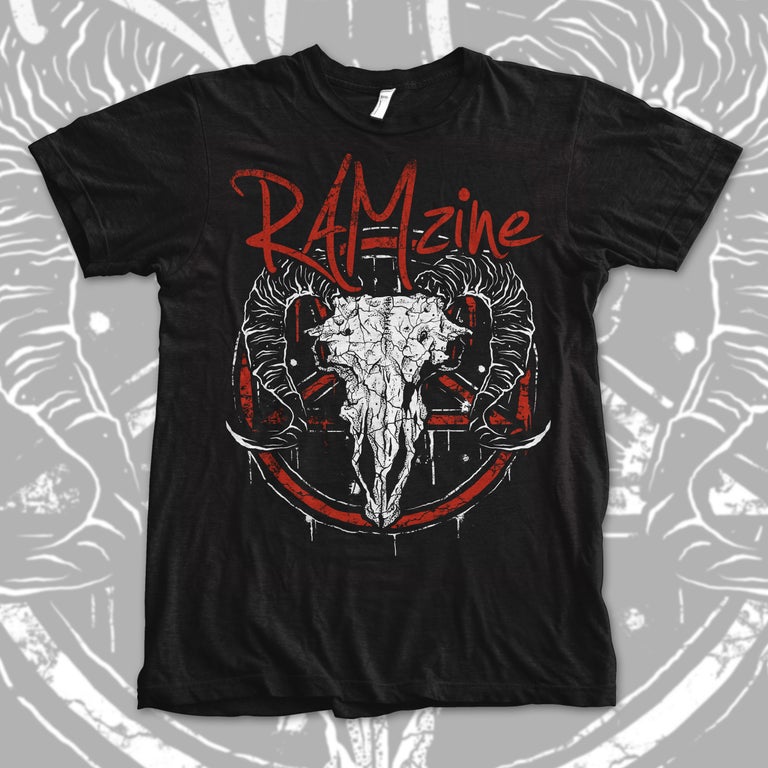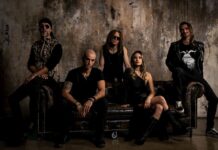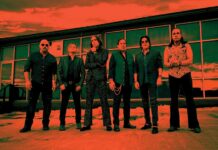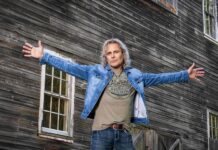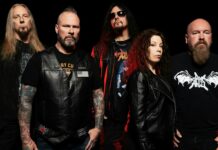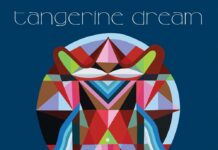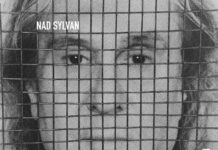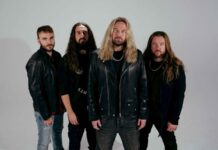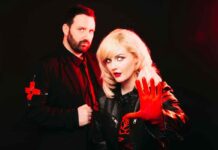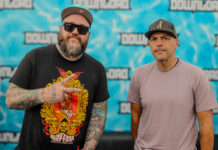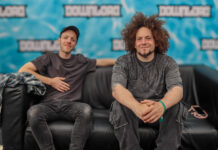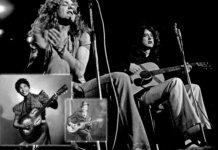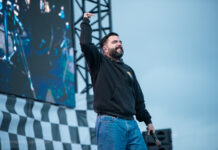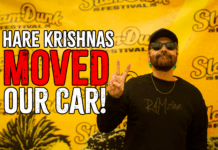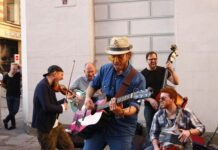On Saturday RAMzine went to the exemplary Festival of Sound (The Music and Audio Show) which is the UK’s Largest Luxury Audio and Lifestyle Show, held in West London. We went to attend a seminar given by GARY LANGAN, the 62-year-old engineer, producer, mixer and musician who worked as an assistant engineer at the SARM studios in the 1970s, learning the trade from Gary Lyons and Mike Stone, whom he assisted on the Queen albums A Night at the Opera, A Day at the Races, and News of the World. His talk was entitled “Bohemian Rhapsody Unwrapped” and he described a fantastic journey that took us to the final mix.
Gary Langan was the man who pushed “play” for the first time ever on the epic six-minute single ‘Bohemian Rhapsody’ (1975) – a song that defined an era and went on to sell more than a million copies in a few short months. The rock song is often cited as one of the most revered in popular music history.
After a brief introductory video that described Langan’s other engineering work, including Jeff Wayne’s War of the Worlds (1978, Langan created the SACD mix for the re-issue) Owner of a Lonely Heart (Yes, 1983) Cold as Ice (Foreigner, 1977) the Lexicon of Love album (ABC 1982) among many others, Langan gave his own fascinating account of working on the multi-tracked “mock opera” in the mid-Seventies.

He described what it was like to work as a young 19-year-old assistant engineer in SARM in Notting Hill, the sacred studios where Led Zeppelin’s IV and Jethro Tull’s Aqualung were recorded (1970) and which went on to be the famous setting for “Do They Know It’s Christmas” in 1984. “I made a lot of tea and coffee…” Langan joked.
One reason why Langan chose to work in SARM was that the studio pioneered the 24-track (multi-tracking) recording process. He was a musician in his own right (saxophone and violin) and had worked with his father (a successful recording artist) during the school holidays. He studied Telecoms at College, “That was as close as I could find to sound engineering…” but realised that the qualification that he got in 1971 meant he would be confined forever in jobs in the GPO (now British Telecom) or in Defence. He admitted that Trident Studios was his first choice (Soho, London, where David Bowie’s The Rise and Fall of Ziggy Stardust was recorded) and even passed the interview stage. But he was six months too young for the role they had in mind. A chance encounter his father had with a representative of SARM gave him the opportunity to work with them as: “Runner, assistant engineer and tea boy...”
He explained that, at that stage, the SARM studios were not really known for rock recordings, but specialised in singles and short pop songs. He discovered, quickly, that he had a talent for editing tapes and earned his spurs by working and mastering the ten-track K-Tel records that were popular at the time. He told us he remembers working on a Bay City Rollers number. And recalls that he was tasked to “take the band away for a while” to a Wimpy in Aldgate East (with the famous teen-idols wearing their tartans and make-up) while the bosses and the executives worked on some skulduggery behind the scenes to “make the sound work” possibly because the guys “couldn’t really play.”
He also remembers being with Kenny Everett for the first time and working on the parody of the ‘Kung Fu Fighting’ disco song for Carl Douglas. He met producer Mike Stone when the famous Abbey Road producer arrived from Trident to work on the SARM 24-track gear for the Queen song: ‘Now I’m Here’ from the Sheer Heart Attack album(January 1975). He was aware of the discussions around ‘Bohemian Rhapsody’ and realised from the very beginning, that this recording was to be an epic session and was an act of faith for both the studio and the band: “With epic sounds came epic conversations…” he told us.
He described how ‘Bohemian Rhapsody’ over-dubs were performed in SARM, but the piano, bass and drums were completed in the iconic Rockfield Studios in Wales (where Motörhead made their first recordings). Langan showed us a plan of the studios at that time and where the famous Bechstein piano was found, which Freddie played elegantly. The studio was equipped with a Quad control room hand-built by Dougie Rosser. At SARM in London the set-up included the Trident B-range. He revealed how Queen had rehearsed the song for three weeks before even entering the studio, something almost unheard of at the time. They guessed the song was too complicated to record without trial and error and wanted to save time in the studio: “Most bands larked about or jammed in the studio to get their sound right… not Queen.”
He remembers the moment when Queen first paraded into the studios: “It was an entourage…” he explained. “They turned up with a production team, road crew, hangers-on… the whole lot. I remember seeing Freddie’s painted nails on his left hand and I thought … oh boy! I’ve never seen anything like that before. ” He described the drummer of Queen, Roger Taylor as: “almost a cartoon character…” John Deacon (bass) as “Forever in silence until there was a great debate … then he came in with a comment that would probably ruin everything”. And Brian May (guitar) as a “charming and quiet guy… very hesitant, he could not even decide if he should have tea or coffee. I would bring him a mug of both!”
Langan explained, in some depth, how the multi-track work was carried out at SARM (inc. the “tones reel” — his responsibility: “I had to cue the songs correctly or I would get headphones chucked at me.”) He soon became an intuitive tape-operator for Queen and learned the art of multi-tracking. He reminded the audience that in 1975 there were no computers, no click tracks, no plug-ins and “Doris” the 24-track tape machine at Rockfield needed to be frequently repaired by a maintenance technician named ‘Otto’ who also worked fixing farming machinery.
The single was recorded in 3 parts (for ease, these parts became known in the studio as: the Ballad 0 to 3.05 min, the Opera 3.05 to 4.07 min and the Rock 4.07 to 5.55 min.) At the Festival of Sound seminar — when we listened to the rhythm tracks (bass, drums and piano) — we could clearly hear Freddie doing a count-in, Roger beating out a pulse and John stamping a beat with his foot. “There was no metronome, the band preferred to work to their own “body clock” to get the beat and measure.” Other idiosyncrasies included a piano that became out-of-tune by the final recording “Freddie had been bashing at it all day… where do you find a piano tuner in the depths of Wales?” and Brian, who played with a sixpence piece (not a plectrum) and who insisted on playing his guitar parts “Not with his head… but with his fingers…” This meant that, at the seminar, we heard quite obvious imperfections on the guitar-only tracks… and these remain on the final version. Perhaps they lend the song authenticity and sparkle. (We were told that Brian only started laying down his guitar parts when 75% of the recording had been completed)
Langan described the atmosphere at SARM as “tense” – especially when the 3-part harmony work began: “It was at that point that I learned the skills of focus and no compromise…” he told us, as he explained how the over-dubs were completed. It was a long and arduous process and required assiduity and total concentration. “I probably couldn’t do it now…” Langan admitted. “The pressure was too immense.”
“Mike and Roy Thomas Baker (Queen’s producer) worked on the double tracking and then the multi-layering while I worked on editing the tapes… but often all three of us worked on the control desk together, six hands. Of course I was never allowed to touch the control for drums…”
When the final version was completed (“by then there must have been at least 100 voices on the opera part”) and Langan was told to press “play” for the bands first ever encounter with their magical work, he was aware that Kenny Everett had entered the building: “Perhaps it was quite fortunate that Kenny was there…” Langan told us: “ He asked for a copy of the tape and I was told to dash-off a copy for him. The radio DJ was told that under no circumstances should he play the new song to anyone. And he agreed to those terms.”
“Next Saturday he played fragments of the song [even though it was strictly embargoed] on his radio show. And he finished his programme with the entire six-minute suite… demonstrating that (perhaps to the hesitant and sceptical EMI executives) the number was, indeed, radio-friendly and could be played (in full) by the pop stations… this proved a fait accompli for the record label who had no choice but to release it as a single…”
The rest is rock history.
The upcoming 2018 British-American biographical film Bohemian Rhapsody starring Rami Malek as Freddie Mercury, is in cinemas 24th October 2018.


